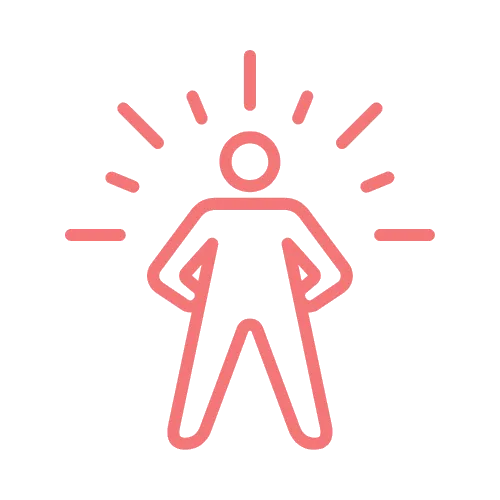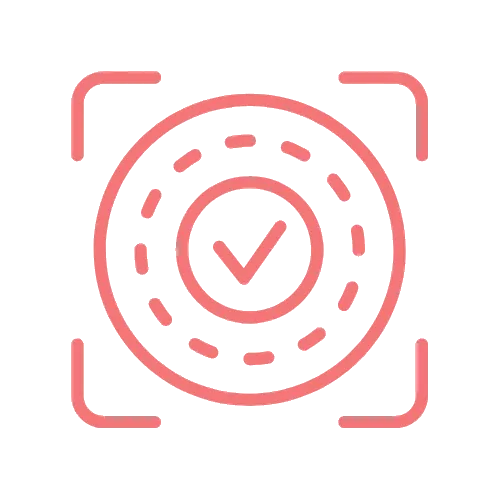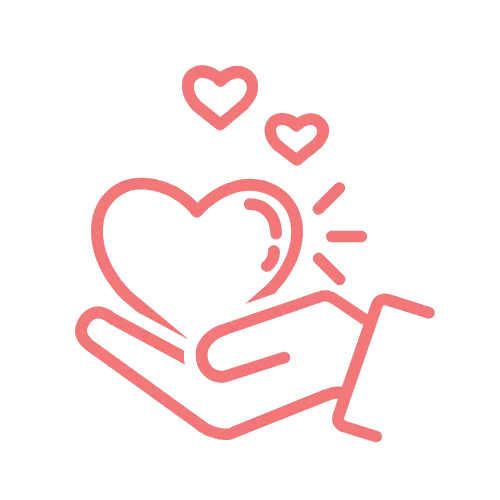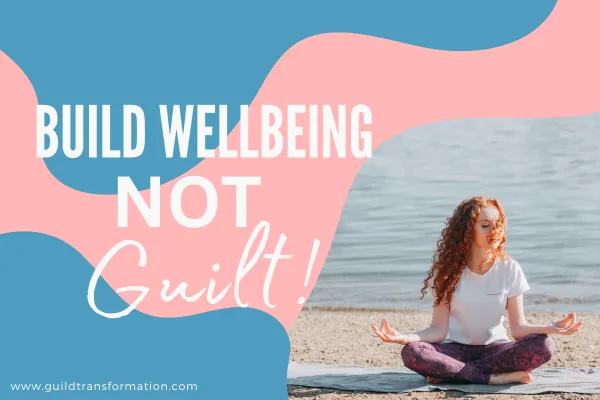Self-Improvement That Actually Works - Online Courses & Coaching for Personal Development & Growth
Break Free. Rebuild You. Unlock Your Future-Self!
Where self improvement meets life coaching expertise. At Guild Transformation, we give you the self help tools, strategies, and guidance you need to move from stuck to unstoppable - without the fluff, overwhelm, or endless 'try harder' advice.
About Guild Transformation:
Growth
Empowerment
Alignment
Transformation
Confidence
Welcome to Guild Transformation
Bitesize Learning. Maximum Impact.
Hello and welcome to Guild Transformation - your home for personal development, self-improvement, and wellbeing.
Our bitesize online courses, coaching programmes, and membership, are designed to help you grow faster and more confidently, giving you the same powerful life coaching tools and soft skills training used by professional coaches - simplified so you can apply them independently.
Our courses are practical, and results-driven, so you can learn powerful techniques in under an hour, apply them instantly, and start building lasting confidence, clarity, and self-awareness. No endless fluff, modules or filler chapters - just focused, empowering personal growth tools to help you become your most confident, capable, and unstoppable self.
Whether you want to boost your confidence, set better boundaries, improve focus, or rediscover your purpose, Guild Transformation gives you the proven framework and motivation to make it happen - one powerful step at a time.
“It’s not about how much you learn - it’s about how quickly and consistently you apply it.”
– Jo Marshall, Founder of Guild Transformation
Why choose our courses for your self-improvement journey?
Quick & Focused: Learn powerful self help tools in under an hour.
Practical & Actionable: Apply strategies immediately, with no wasted time.
Lasting Results: Build confidence, clarity, and soft skills that stay with you for life.
Why Choose Guild Transformation?
When you join Guild Transformation, you’re not just signing up for another generic online course. You’re stepping into a practical, supportive space designed to empower you.
Here’s why people love us:
Tools That Work: No vague positivity. Just coaching frameworks, exercises, and self help tools that create real, lasting change.
Clarity & Confidence: Learn how to shift your mindset, break unhelpful cycles, and build confidence in your personal development journey.
Sustainable Transformation: No quick fixes. Our methods are designed to stay with you for life.
Community & Connection: Whether through life coaching programmes, soft skills training, or group courses, you’ll grow alongside others on the same path.
Self-Empowerment: This isn’t about depending on a coach forever. It’s about learning to coach yourself and building the soft skills that put you back in control.
Vision, Mission, Values
We imagine a world where self-help isn’t overwhelming, confusing, or lonely - but practical, empowering, and life-changing.

Our Mission:
To bring the power of coaching into everyday life, making proven self-help tools accessible to anyone who wants to grow.

Our Vision:
To empower millions to stop surviving and start thriving - by meeting their future self with confidence, clarity, and purpose.

Our Values:
We live by our values - ensuring that we stay authentic, empowering, transformational, and compassionate.
Our Values:

Empowerment
You already hold the key to achieving great things.
We just show you how to turn it.

Authenticity
No hype, no fluff, just real tools that work.
We are not here to waste your time and efforts!

Compassionate
Growth takes courage, and can be a lonely journey. We walk with you, not ahead of you.

Transformative
Not temporary change, but lasting, soul-deep growth. We can't do it for you, but we can do it with you!
Your first step to clarity, confidence, and unstoppable momentum.
FREE: Self-Improvement Starter Toolkit
Feeling stuck, overwhelmed, or unsure where to begin? This free toolkit gives you practical self help tools and uplifting prompts to reset, refocus, and move forward. Inside you’ll discover simple daily practices to spark motivation, strengthen your soft skills, and reconnect with your future self.
Read Our Latest Articles

The Great Lock-In: Embracing the Seasonal Shift to Build Wellbeing, Not Guilt
“We are not above seasons - we are of them.”
Too often, the self-improvement culture encourages us to drop into January with grand resolutions - gym passes, drastic diets, productivity blitzes. And of course too often, by February or March, the energy wanes, willpower fades, guilt creeps in.
What if instead of trusting a cold, set-in-stone calendar date, we let the seasons hold us? What if we turned autumn into a “lock-in” phase - a deliberate seasonal container in which we commit to cultivating habits, resting deeply, renewing creativity, and tending to inner life?
A “Great Lock-In” is not about forcing breakthroughs or punishing ourselves for imperfection. It’s about inviting coherence, rest, alignment - and allowing the darkness and introspection of the seasons to become fertile ground.
Below I explore why seasons matter psychologically, how to build rhythms attuned to natural energy cycles, how to protect wellbeing against winter’s shadows (including SAD), and how to use winter as a season of renewal rather than shame. Then I will offer up some actionable tips so you can design your own Great Lock-In...
Why Seasons Matter: The Psychological Logic of Rhythms
At first glance, seasons are just external - weather, daylight, temperature - but they exert profound internal influence. People are, in many ways, still very much seasonal creatures. Recent research shows that our circadian rhythms remain sensitive to changes in daylight, even in our artificially lit, modern lives.
The brain’s master clock, the 'suprachiasmatic nucleus' (SCN), constantly integrates signals from light and darkness to modulate hormones, neurotransmitters like serotonin and dopamine, melatonin release, sleep-wake timing, and mood circuits.
In winter, shorter days and longer nights tend to push our circadian phase later (we stay up, sleep later) and dampen alertness. Sleep architecture also shifts: one study found that total sleep time peaks during winter, while dreaming (REM) sleep and deep (slow-wave) sleep show seasonal fluctuations.
Mood is one of the most sensitive psychological systems to seasonal variation. Studies document seasonal affective disorder (SAD) - a depressive pattern triggered in fall and winter with remission in spring/summer - as well as more subtle winter blues in many people. According to APA polling, roughly 5% of adults meet criteria for SAD; meanwhile, many more (around 40–45%) report mood dips in winter.
We also see that cognition, attention, and working memory vary across seasons - with peaks and troughs aligned to daylight and social rhythms.
In short: our bodies, our brains, and our psyches are not neutral to seasons. They respond. So resisting that influence often sets us up for tension, rather than alignment.
Why a Seasonal “Lock-In” Beats New Year Resolutions
1. Seasonal transitions already invite slowing.
Autumn naturally encourages turning inward, reducing activity, nesting. People tend to slow down anyway. Rather than resisting that pull, a lock-in works with it.
2. Energy aligns better with natural cycles.
Trying to maintain summer-level productivity through dark, cold months is like sprinting uphill in snow. Instead, accept a different cadence: deepening, refining, tending, rest, creative incubation.
3. Habits seeded in a bounded “container” tend to stick better.
A three- to four-month lock-in gives manageable scope. It feels less overwhelming than a full-year resolution. It invites experimentation, iteration, and patience.
4. It avoids shame-based thinking.
When goals fall apart in February, we often blame ourselves for failure. With a seasonal container, we reframe the objective: this is a time to deepen, not to prove ourselves.
5. It gives a natural rhythm of rest and renewal.
Winter needn’t be a time of stagnation - it can be one of regeneration, reflection, recovery. Then, with the arrival of spring, you can emerge renewed, rather than frayed.

Designing Your Own Great Lock-In: Principles & Phases
Here’s how to design a seasonal lock-in that supports growth, rest, creativity, and wellbeing.
1. Intention & Theme
Start by naming the theme or tone for the season. Examples: “Nourish,” “Deepening,” “Restful Creation,” “Slow Alchemy.” This becomes your guiding lens through all decisions.
Ask:
What inner quality (gentleness, curiosity, receptivity) do I want to strengthen?
Which habits do I want to prioritise?
What’s realistic for this season?
2. Rhythms, Not Rigid Rules
Rather than strict rules, design rhythms - recurring patterns or frameworks that give shape. For example:
Weekly cadence: one deep rest day, one creative day, two active days, etc.
Monthly check-ins: reflection, review, course correction.
Seasonal anchor: set a midpoint (e.g. Winter Solstice) as a mini milestone.
Rhythms adapt; rules force. In a season of flux, rhythms offer more grace.
3. Phases or Stages
You can divide your lock-in into stages:
Harvest / Integration (Autumn): Gather learnings from the year, hone practices, drop what no longer serves.
Deepening (Mid-Fall to Early Winter): Focus inward, settle into core habits, reduce extraneous projects.
Rest / Pause (Winter): Embrace restful practices, creative incubation, shorter output cycles.
Emergence (Late Winter / Early Spring): Start germinating new ideas, shift into preparing for expansion.
Each stage is intentional and paced.
4. Habit Bundles, Not Grand Overhauls
Choose 2 - 4 key habit supports. For example:
Morning ritual (breath, journaling, tea)
Movement (walks, yoga)
Creative practice (writing, painting)
Night ritual (digital sunset, reading, rest)
Bundle these around your theme. Track them loosely (not rigidly), so you can lean into consistency over perfection.
5. Gentle Tracking & Reflection
Instead of daily counting, use weekly or mid-point reflections. Use simple prompts:
What felt nourishing?
What drained me?
What small shifts do I want next week?
Journal, voice note, or even sketch - whatever feels heart-led.
6. Community or Accountability as a Zeitgeber
“Zeitgebers” are cues that entrain rhythms - light, meals, social schedule. In psychology, Interpersonal and Social Rhythm Therapy (IPSRT) shows that maintaining stable social rhythms can stabilise mood in bipolar disorder by anchoring biological rhythms.
In your lock-in, build soft accountability: a buddy check-in, group ritual, or gentle circle of sharing. This acts as a social anchor.
Protecting Wellbeing During Dark Seasons: SAD, Winter Blues & Mood Shifts
Even with a well-designed lock-in, winter can bring shadows. Here are strategies grounded in evidence.
Understand the Risks
Symptoms: persistent low mood, oversleeping, lethargy, carbohydrate cravings, social withdrawal.
SAD affects ~5% of adults; many more experience subclinical mood dips.
Light and circadian misalignment are central to SAD’s physiology.
Evidence-Based Supports
Light Therapy / Bright Light Exposure
Use a 10,000-lux light box in the morning, ideally before 9 a.m. (20–30 minutes).
Even sitting near a bright window or spending time outdoors during daylight improves mood.
Use higher-watt indoor lighting in darker hours.Movement & Outdoor Time
Light exercise raises endorphins and serotonin. Try gentle walking, yoga, or outdoor movement when daylight allows.Vitamin D & Diet
Low vitamin D correlates with mood dips. Consider a supplement (check with your physician).
Prioritise protein (tryptophan), fibre, whole foods, Omega-3s.Structured Sleep & Routine
Keep bedtime and wake time consistent. Avoid late-night blue light.
Use a “digital sunset” ritual - not just to reduce stimulation but to signal to your nervous system that night is coming.Cognitive Supports & Psychotherapy
CBT for SAD helps participants identify spiralling winter thoughts and design behavioural activation.
Mindfulness / MBCT helps reduce rumination, a known risk factor in depression.
Reach out for professional care if symptoms deepen.Social Connection
Isolation magnifies winter blues. Even small gatherings, phone check-ins, creative circles help maintain connection.
By integrating these supports into your seasonal lock-in, the darkness doesn’t have to be feared—it becomes a terrain you can travel with tools.
Winter as Renewal - A Case Against Shame
In a culture of constant hustle, failure to maintain momentum through winter can feel like a personal deficit. But that story is misaligned with how nature works.
When the land rests, seeds germinate underground. When the trees drop leaves, they conserve energy to bloom again. So can we.
A Great Lock-In invites us to:
Shift the metric from external productivity to nourishing consistency and emergent creativity.
Honour rest as generative. Rest is not absence - it is preparation, regeneration, incubation.
Return to your why when the outer output feels slow. Remind yourself: this is a season, not a default.
Celebrate small shifts: consistency, insight, expanded inner capacity - even if “visible achievement” feels modest.
When spring arrives, you'll emerge from your seasonal alchemy more grounded and ready, rather than depleted or apologetic.

Tips & Practices to Bring Into Your Season
Anchor in the solstice / equinox
Use the winter solstice (mid-December) or mid-point as a ritual marker. Pause to reflect: What have I learned? What do I wish to sow in darkness?“Digital Sunsets”
60–90 min before sleep, power down screens, light candles or low warm lighting, read or journal.Batch “deep days”
Instead of trying to force daily creative work, designate select “deep days” for writing, art, reflective journaling.Micro-rituals of pause
1-minute breath check-ins, tiny walks, tea rituals. These act as "micro-zeitgebers" to re-centre throughout the day.Use a seasonal journal or tracker
Instead of bullet lists, use prompts tied to the season: “What’s quieting in me?” “What wants to emerge in spring?” Reflect monthly.Gentle experimentation
If something's not working, shift. Winter is a time for iteration, not rigid perfection.Soft accountability
Share with a friend: “I’m holding space this winter for rest + deepening.” A check-in once per week or month helps anchor commitment.Light first thing
On waking, open curtains, expose even briefly to daylight or use a light lamp. Signal to your biology that day is beginning.
Concluding Invitation
The Great Lock-In is not about pushing harder. It’s about listening more deeply. It’s a ritual container that says: I will tend myself in this season. I will seed growth quietly, with patience, with heart. I will let rest and creativity cohabitate. I will lean into the steady pulse of earth, dark, and light.
Winter need not be a time of postponed life or lost motivation. It can be a time of renewal, redirection, and re-founding. And come spring, you’ll emerge - less depleted, more grounded, carrying the gentle integrity of alignment rather than exhaustion.
If you are wanting to rest and reset yourself, then there is no better time than you! You've got this, now go do it!
'Our biggest enemy is our own self-doubt. We really can achieve extraordinary things in our lives. But we sabotage our greatness because of our fear'
Robin Sharma
Start Your Journey Today
Whether you’re looking for online courses in self improvement, guided life coaching, or practical soft skills training, Guild Transformation is here to help you grow.
Your first step to clarity, confidence, and unstoppable momentum starts here.
Subscribe to our newsletter and be the first to hear about our new releases, offers, hints & tips!
'The only real limitation on your abilities is the level of your desires. If you want it badly enough, there are no limits on what you can achieve'
Brian Tracy
Popular Workshops
We understand that quality training shouldn't be out of reach for anyone. That's why we've designed our courses to be both accessible and affordable. With flexible scheduling and a range of pricing options, Elevate Learning ensures that everyone, from solo entrepreneurs to growing teams, can access the professional development they need.
Frequently Asked Questions
We know that choosing the right training program is a big decision, and you may have some questions. Below, we've answered some of the most common questions we receive from potential customers. If you have any other queries, feel free to reach out to us directly.
What is included in the courses?
All of our courses are designed to provide a comprehensive but no-fluff learning experience. This typically includes:
- Video Lessons: Our courses are made up of pre-recorded mini-videos, with slides and captions.
- Course Materials: Downloadable resources such as workbooks, templates, and guides that complement the video sessions and provide additional learning opportunities.
- Practical Exercises: Hands-on activities and exercises that help you apply what you've learned in real-world scenarios.
Are your courses suitable for beginners?
Absolutely! All our offerings (whether courses or coaching) are designed to cater to a wide range of experience levels. Whether you're a complete beginner or an experienced professional looking to sharpen your skills, you'll find value in our courses. Each session is structured to be accessible, while also offering advanced insights for those looking to dive deeper.
How do I know which course is right for me?
We offer a diverse range of courses, each tailored to meet specific learning objectives. To help you choose the right one, we recommend considering your current skill level, your professional goals, and the areas where you feel you need the most development. If you're still unsure, our team is always available to provide personalized recommendations based on your needs.
What technology do I need to enrol on a course?
Enrolling on our courses is easy - all you need is a device with a stable internet connection, a camera/webcam (if you wish to interact visually on live coaching sessions). We use Zoom for our live sessions, and you'll receive detailed instructions on how to join once you register.
What happens if I miss my live coaching session?
We understand that sometimes plans change. If you miss your live session, you will be given access to the recording within 24 hours of the recording taking place.
Do you offer team training and coaching?
Yes. Our workshops are a great way for teams to learn and grow together. We offer special group rates and can even arrange customised sessions tailored to your team's specific needs. Contact us to discuss your requirements and we'll help set up a program that works for your group.
How do I sign up for a course or coaching program?
Signing up is easy! Simply browse our courses page, select the one you want to enrol on, and follow the registration prompts. Once registered, you'll receive a confirmation email with all the details you need to get started.
When we open the doors to our coaching, you will follow the prompts on the dedicated page.
What our customers are saying:
Here are a few of our testimonials from our valued and satisfied learners:

When I enrolled on the Confidence Code and Imposter Syndrome workshops, I was out of work. The self help tools I learned gave me clarity - I’ve now secured my dream job!
Michelle Yates, Gosforth, Newcastle-Upon-Tyne

The Self-Coaching workshop helped me start my own business. The mix of life coaching techniques and practical exercises made all the difference.
John Taylor, Saddleworth, Lancashire

Guild Transformation’s workshops are second to none. Their focus on soft skills and personal growth has improved my leadership as a department head.
Kirsty Thompson, Preston, Lancashire
© Copyright 2025 Guild Transformation Company Reg No: 11710574 - Privacy Policy - Terms & Conditions


